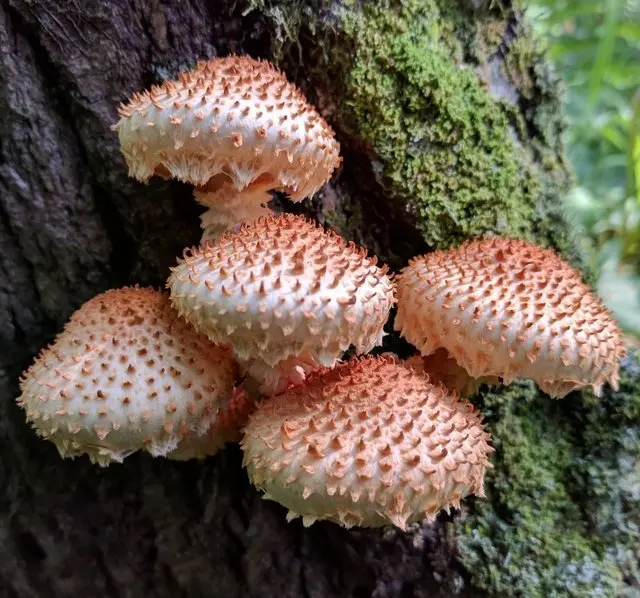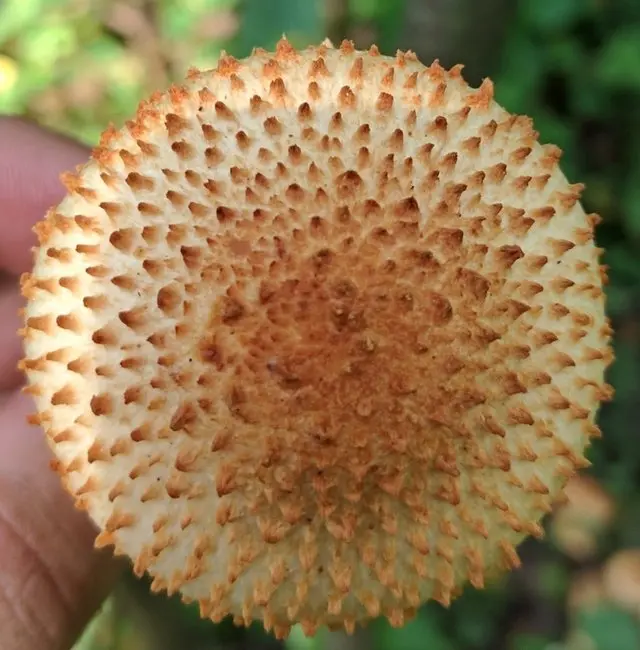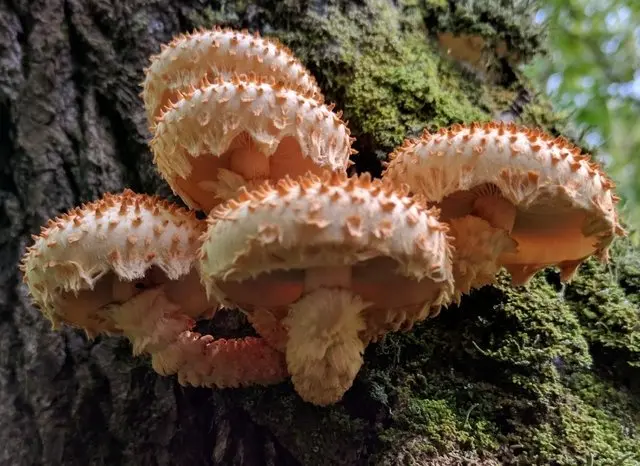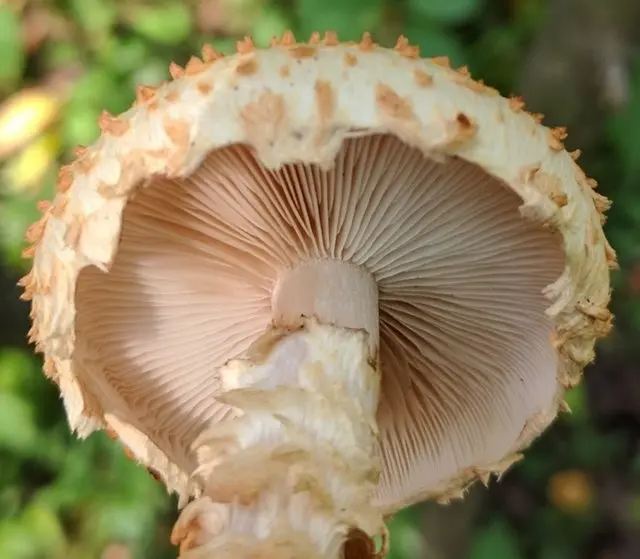Scale-like scaly (Pholiota squarrosoides)
- Division: Basidiomycota (Basidiomycetes)
- Subdivision: Agaricomycotina (Agaricomycetes)
- Class: Agaricomycetes (Agaricomycetes)
- Subclass: Agaricomycetidae (Agaricomycetes)
- Order: Agaricales (Agaric or Lamellar)
- Family: Strophariaceae (Strophariaceae)
- Genus: Pholiota (Scaly)
- Type: Pholiota squarrosoides (Squamous scale)
:
- Hypodendrum squarrosoides
- Dryophila ochropallida
- Pholiota from Romagna

Theoretically, Pholiota squarrosoides can be distinguished from the very similar Pholiota squarrosa even without the use of a microscope. The plates of Pholiota squarrosoides change from whitish to tan with age without going through a greenish stage. The skin on the cap of Pholiota squarrosoides is very light and slightly sticky between the scales (unlike the always dry cap of Pholiota squarrosa). Finally, as noted in many sources, Pholiota squarrosoides never has the garlic smell that Pholiota squarrosa can (sometimes) have.
But this is, alas, only a theory. In practice, as we all perfectly understand, weather conditions greatly affect the stickiness of the cap. And if we get adult specimens, we have absolutely no way of knowing if the plates have gone through the “greenish stage”.
Some authors attempt to provide other non-microscopic distinguishing characters (eg the color of the skin of the cap and scales, or the degree of yellowness that appears in young plates), most of these characters vary greatly and overlap significantly between the two species.
So only a microscope examination can make the final point in the definition: in Pholiota squarrosoides, the spores are much smaller (4-6 x 2,5-3,5 microns versus 6-8 x 4-5 microns in Phoriaota squarrosa), there are no apical pores.
DNA studies confirm that these are two different species.
Ecology: saprophyte and possibly parasite. It grows in large clusters, less often singly, on hardwood.
Season and distribution: summer and autumn. Quite widespread in North America, Europe, Asian countries. Some sources indicate a narrower window: August-September.

head: 3-11 centimeters. Convex, broadly convex or broadly bell-shaped, procumbent with age, with a broad central tubercle.
The edge of young mushrooms is tucked up, later it unfolds, with clearly visible fringed remnants of a private bedspread.
The skin is usually sticky (between scales). Color – very light, whitish, almost white, darker towards the center, to brownish. The entire surface of the cap is covered with well-marked scales. The color of the scales is brownish, ocher-brownish, ocher-brown, brownish.

plates: adherent or slightly decurrent, frequent, narrow. In young specimens they are whitish, with age they become rusty-brown, brownish-brown, possibly with rusty spots. In youth they are covered with a light private veil.

Leg: 4-10 centimeters high and up to 1,5 centimeters thick. Dry. Be sure to have the remains of a private veil in the form of an implicit ring. Above the ring, the stem is almost smooth and light; below it, it is covered with clearly visible coarse tinted scales;
Pulp: whitish. Dense, especially at the legs
Smell and taste: The smell is not pronounced or weak mushroom, pleasant. No special taste.
spore powder: Brownish.
The fungus is edible, as is the common flake (Pholiota squarrosa) mentioned above. However, since the scaly flesh does not have a bitter taste and there is no unpleasant smell, from a culinary point of view, this mushroom is even better than the common scaly. Suitable for frying, used for cooking second courses. You can marinate.
Photo: Andrey









